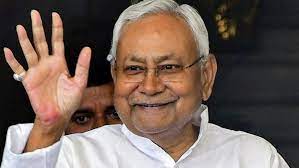What Are the Non-Cognizable Offenses a Teacher Is Accused of in the Muzaffarnagar Video Case, and How Differs the Non-Cognizable Report from the FIR?
Following the release of a video showing a teacher in Muzaffarnagar, Uttar Pradesh, ordering students to hit a Muslim pupil and making racial insults, the police have reported the instructor for non-convictional offenses.
A court must take action on the non-cognizable report (NCR) that results from non-cognizable offenses. The police can only look into the matter and make an arrest upon a judge’s order. It differs from a First Information Report (FIR), which allows the police to launch an independent investigation.
The Muzaffarnagar video sparked enormous indignation throughout the country and was harshly criticized by political parties and organizations. A regional strongman seemed to have negotiated a settlement between the accused and the student’s family while the instructor defended her actions.
The non-congnisable offenses are defined below, along with the distinctions between an NCR and a FIR.
What are crimes that are cognisable?
The 1973 Code for Criminal Procedure (CrPC) describes both cognizable and non-cognizable offenses.
The gravity of the offenses is the primary distinction between the two kinds of crimes. The less severe non-cognizable cases carry sentences of less than three years in jail. On the other hand, violent offenses like rape and murder that carry a sentence of more than three years in prison are considered cognizable offenses.
The ability to arrest is the second point of distinction. For non-cognizable offenses, the police need a warrant in order to conduct an arrest.
According to Section 2(c) of the Criminal Procedure Code, “cognizable offence” and “cognizable case” refer to offenses for which a police officer may make an arrest without a warrant in line with the First Schedule or any other currently in effect statute.
According to Section 2 (i) of the Criminal Procedure Code, “Non-cognizable offence” and “non-cognizable case” refer to offenses for which a police officer lacks the legal right to make an arrest without a warrant.
However, if a person has been arrested on more than one count and at least one of those counts constitutes a crime, the police may regard the matter as a crime and initiate an investigation on their own.
According to Section 155 of the IPC, “where a case relates to two or more offences of which at least one is cognizable, the case shall be deemed to be a cognizable case, notwithstanding the other offences are non-cognizable.”
What is the NCR complaint against the Muzaffarnagar teacher?
In the Muzaffarnagar case, a charge has been filed under Sections 323 and 504 of the Indian Penal Code (IPC), 1860 against the instructor Trupti Tyagi. Both are non-cognizable offenses, hence the reported incident is a non-cognizable report (NCR) and not a formal investigation report (FIR).
When it comes to intentionally hurting someone, Section 323 provides a maximum punishment of one year and a fine of up to Rs 1,000, or both. The maximum term under Section 504 for malicious insult with the purpose to cause a breach of the peace is two years in prison, a fine, or both. The two are categorized as non-cognizable offenses since they carry sentences of less than three years in jail.
The police have the authority to look into a FIR filed against Tyagi on cognisable allegations and to make an arrest if necessary.
A FIR is often filed in major instances like rape or murder, while an NCR is typically filed in lesser cases.
In Tyagi’s case, the NCR copy has been mentioned in news articles.
Muzaffarnagar case compromise and other inquiries
An apparent agreement between the accused and victim’s family appears to have been reached by a regional strongman, despite the fact that the Muzaffarnagar event is still causing uproar.
Naresh Tikait, a farmer activist and Bharatiya Kisan Union (BKU) leader, visited with the victim’s family and said that the two sides had come to an agreement and that he would get the complaint brought against them dismissed.
The national child rights organization and the department of education have both initiated independent investigations into the situation.
“On Saturday, the National Commission for the Protection of Children’s Rights said that it had sent a letter requesting that a FIR be filed with the UP Police and the district administration…The NCPCR requested in writing that the Muzaffarnagar District Magistrate provide pertinent information on the school where the event took place, according to PTI.
According to PTI, the education department has also assembled a team to investigate the situation and submit a report by Monday. A warning has also been sent to the institution.
According to Basic Shiksha Adhikari of Muzaffarnagar Shubham Shukla, a show-cause notice has been sent to the school administration via the management committee’s secretary, Ravinder Tyagi. It has been requested to respond by August 28 with a justification for the continued government recognition of the institution. The BSA said that a team has been deployed to the school and added that a criminal complaint will be filed against the administrators there.







